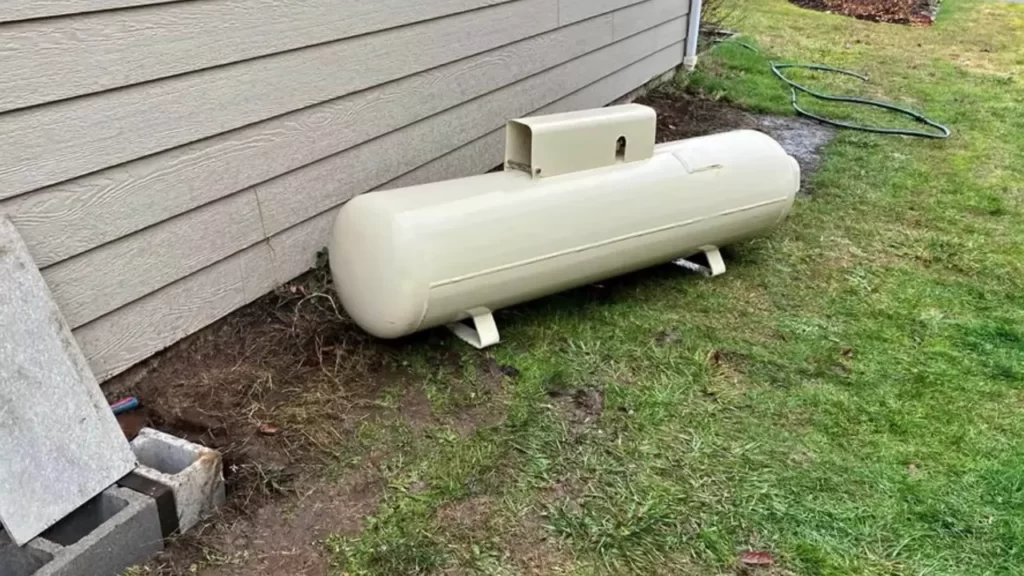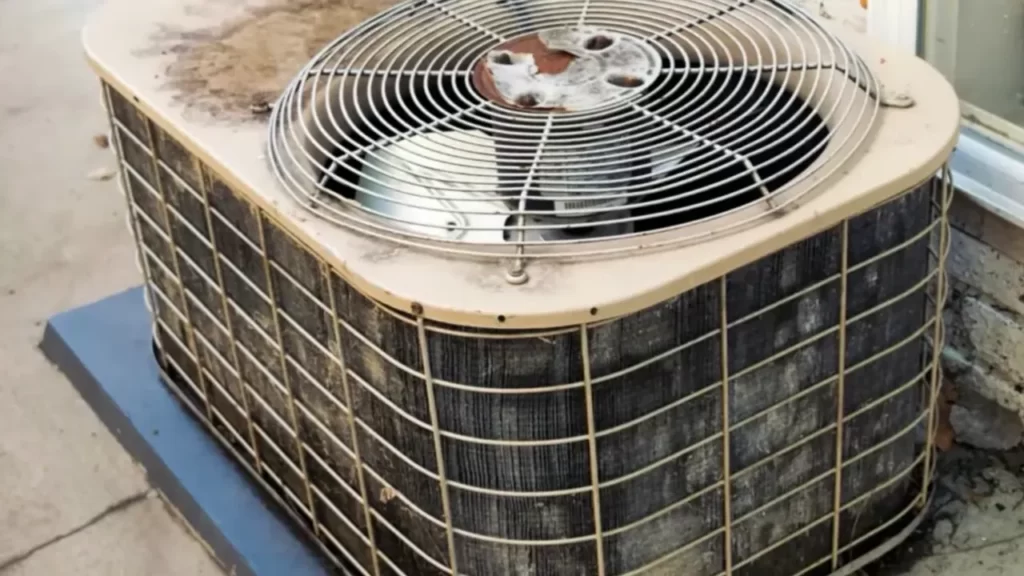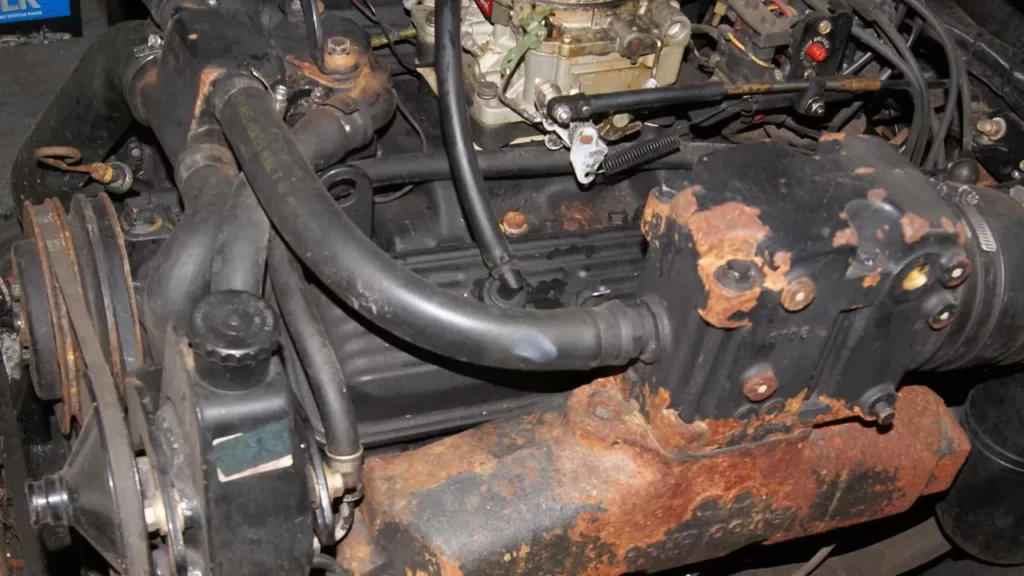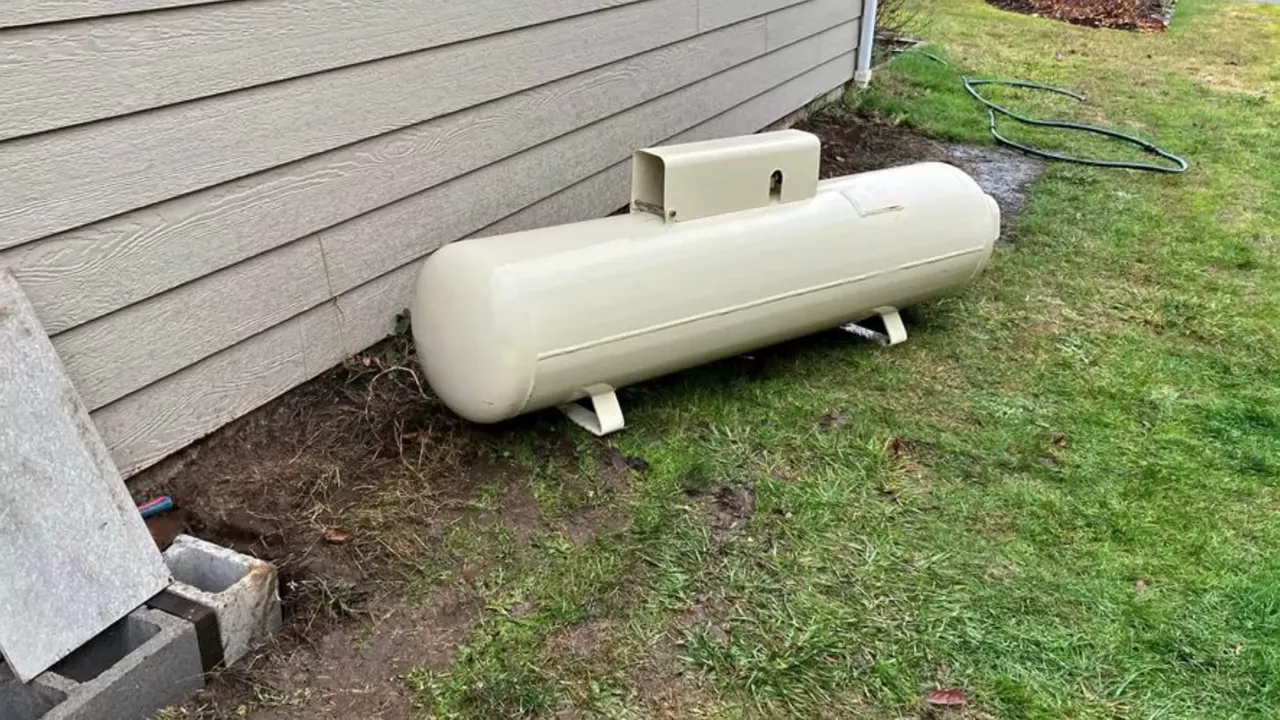To install an anode bag for a propane tank, simply follow these steps: clean the tank, attach the anode bag, secure it tightly, and check for leaks. Now, let’s dive into a detailed explanation of how to properly install an anode bag for your propane tank.
The anode bag is an important component that helps to prevent rust and corrosion in your propane tank. Rust and corrosion can reduce the lifespan of your tank and lead to potential leaks or other safety hazards. By installing an anode bag, you can significantly extend the life of your propane tank and ensure safe and efficient operation.
In this guide, we will provide you with step-by-step instructions on how to install an anode bag for your propane tank, allowing you to protect your investment and enjoy worry-free propane usage.
Why Anode Bags Are Important
Anode bags play a crucial role in protecting propane tanks from corrosion. As we know, corrosion is a natural process that occurs when metal reacts with oxygen and other elements in the environment. When it comes to propane tanks, corrosion can lead to leaks and other safety risks, making it essential to take preventive measures. Installing an anode bag is a simple, yet effective way to safeguard your propane tank against corrosion, ensuring its longevity and reducing the chances of potential hazards.
Anode bags protect propane tanks from corrosion
Propane tanks are typically made of steel, which is prone to corrosion when exposed to various environmental factors such as moisture, humidity, and chemicals. The corrosive process can gradually weaken the tank, compromising its structural integrity and increasing the risk of leaks. Anode bags act as sacrificial electrodes that attract corrosion-inducing elements and prevent them from reaching the tank’s surface.
These bags are typically filled with a combination of several materials such as magnesium, zinc, or aluminum, all of which possess a greater affinity for corrosion compared to the steel used in propane tanks. This means that the anode bag will corrode first before the tank, sacrificing itself to protect the tank from the destructive effects of corrosion.
By installing an anode bag, you provide an additional layer of defense to your propane tank, ensuring it remains in optimal condition for longer periods. This not only saves you from costly repairs or replacements but also guarantees your safety and the integrity of your propane system.
Corrosion can lead to leaks and other safety risks
Corrosion poses serious safety risks when it comes to propane tanks. As the tank wears away due to corrosion, it becomes more susceptible to developing leaks. These leaks can result in the release of flammable propane gas, which can lead to fire hazards and explosions. Additionally, corrosion can cause weakened tank walls, making them more prone to rupture, especially under pressure.
Anode bags act as a preventive measure against such safety risks. They help minimize the chances of corrosion from occurring in the first place, ensuring the tank remains structurally sound and leak-free. Regularly inspecting and replacing anode bags as needed significantly decreases the likelihood of dangerous incidents and enhances the overall safety of your propane setup.
Installing an anode bag is a preventive measure
Installing an anode bag for your propane tank is a proactive step towards preventing corrosion and its associated risks. Rather than waiting for corrosion to take hold and cause damage, anode bags offer ongoing protection from the moment they are installed.
It is advisable to consult with a professional to determine the appropriate size and type of anode bag suited for your specific propane tank. Proper installation ensures maximum effectiveness and longevity of the anode bag, guaranteeing the continued protection of your tank against corrosion.
In conclusion, anode bags play a vital role in safeguarding propane tanks from corrosion. By protecting your tank from the damaging effects of corrosion, you ensure its longevity and reduce the risks of leaks and other safety hazards. Installing an anode bag is a preventive measure that offers peace of mind, allowing you to enjoy the benefits of your propane system worry-free.

Choosing The Right Anode Bag
When it comes to protecting your propane tank from corrosion, installing an anode bag is a smart and cost-effective solution. However, with various options available in the market, choosing the right anode bag can be a daunting task. To make your decision easier, consider these crucial factors: the size and type of your propane tank, ensure compatibility with your tank, and look for high-quality materials and construction. In this article, we’ll delve into each of these factors to help you find the perfect anode bag for your propane tank.
Consider the size and type of your propane tank
Before purchasing an anode bag, it is vital to determine the size and type of your propane tank. Propane tanks come in different sizes and configurations, such as above-ground or underground. The anode bag you choose must fit snugly on your tank to effectively protect it from corrosion. To determine the size of your tank, refer to the manufacturer’s specifications or measure the circumference of the tank using a measuring tape.
Ensure the anode bag is compatible with your tank
Once you have determined the size of your propane tank, it is crucial to ensure that the anode bag you select is compatible with it. Check the specifications provided by the anode bag manufacturer to confirm compatibility. Some anode bags are designed specifically for certain tank materials, such as steel or fiberglass. Additionally, consider the installation method of the anode bag. Some bags require welding or drilling, while others are easy to install using straps or adjustable bands.
Look for high-quality materials and construction
When investing in an anode bag, it is essential to choose one made from high-quality materials and constructed with precision. Look for bags made from corrosion-resistant materials such as zinc or aluminum, as they provide effective protection against rust and deterioration. Additionally, consider the construction of the bag. A well-constructed anode bag should have secure seams, resistant to wear and tear, and built to withstand the outdoor elements. Don’t compromise on quality when it comes to protecting your valuable propane tank.
By considering the size and type of your propane tank, ensuring compatibility, and looking for high-quality materials and construction, you can choose the right anode bag that will provide long-lasting protection for your propane tank. Remember, regular inspection and maintenance of the anode bag is necessary to ensure its effectiveness. Now that you’re armed with this knowledge, you can confidently select the perfect anode bag for your propane tank and enjoy worry-free propane usage.

Step-By-Step Installation Guide
Are you looking to install an anode bag for your propane tank? Don’t worry, our step-by-step installation guide has got you covered. Follow these simple instructions to ensure a safe and secure installation. Remember, safety should always be the top priority when working with propane tanks.
Gather the necessary tools and materials
Before you begin the installation process, make sure you have all the required tools and materials at hand. This will save you time and frustration in the long run. Here’s a list of what you’ll need:
- Propane anode bag
- Cleaning solution
- Lint-free cloth
- Adhesive or fasteners
- Propane tank wrench
- Protective gloves
Turn off the propane supply and ensure safety
Prior to installing the anode bag, it’s crucial to turn off the propane supply and take all necessary safety precautions. This will prevent any accidents or injuries during the installation process. Follow these steps:
- Locate the propane tank valve and turn it clockwise to shut off the supply.
- Ensure all appliances using propane are turned off.
- Keep a fire extinguisher nearby in case of emergencies.
- Wear protective gloves to protect your hands.
Clean the tank surface for optimal adhesion
Before attaching the anode bag, it’s important to clean the surface of the propane tank for optimal adhesion. Follow these steps:
- Mix a cleaning solution using mild soap and warm water.
- Dip a lint-free cloth into the solution and wipe down the tank surface thoroughly.
- Remove any dirt, grease, or debris that may hinder proper adhesion.
- Allow the surface to air dry completely before proceeding.
Attach the anode bag to the tank securely
Now that the tank surface is clean, it’s time to attach the anode bag securely. Follow these steps:
- Position the anode bag over the area you want to cover on the tank.
- If the anode bag has adhesive backing, remove the protective film to expose the adhesive.
- Press the anode bag firmly against the tank surface to ensure proper adhesion.
- If the anode bag requires fasteners, use the appropriate tools to secure it in place.
Check for proper installation and tighten if needed
After attaching the anode bag, it’s essential to check for proper installation and tighten if needed. Follow these steps:
- Inspect the anode bag to ensure it is securely attached and covers the desired area.
- If any loose areas are found, tighten the fasteners or adhesive to reinforce the attachment.
- Double-check all connections and verify that the anode bag is properly aligned with the tank.
- Once satisfied with the installation, ensure the tank valve remains closed until ready to use.
Congratulations! You have successfully completed the installation of an anode bag for your propane tank. Regularly inspect the bag for any signs of wear or damage, and replace it as necessary to ensure optimal protection for your tank. Remember, proper maintenance and care will extend the lifespan of your propane tank.

Maintaining And Replacing Anode Bags
Regular maintenance and timely replacement of anode bags are crucial for the efficient and safe functioning of your propane tank. Anode bags play a vital role in preventing corrosion, ensuring the longevity of your tank, and protecting your investment. In this section, we will discuss important steps you should take to maintain and replace anode bags effectively.
Regularly inspect the condition of the anode bag
To ensure the effective protection of your propane tank, it is essential to regularly inspect the condition of the anode bag. Start by visually examining the bag for any signs of wear, damage, or corrosion. Look out for any holes, tears, or significant degradation that may compromise its function. Regular inspections help identify potential issues before they escalate, allowing you to take timely action to protect your propane tank.
Ensure the bag is free from damage or wear
A proactive approach is essential when it comes to maintaining the integrity of your anode bag. Make sure there are no visible damages, such as punctures or cuts, that may reduce its effectiveness. Carefully inspect the bag’s connections and ensure they are secure, without any signs of leakage or loose fittings. Additionally, check for any buildup of debris or sediment that could hinder the bag’s ability to function optimally.
Replace the anode bag as recommended by the manufacturer
Anode bags are not meant to last indefinitely, and manufacturers often provide guidelines on when to replace them. It is crucial to adhere to these recommendations to ensure continuous protection against corrosion. Failure to replace the anode bag can lead to accelerated wear and corrosion of your propane tank, which can be costly to repair or replace. Always refer to the manufacturer’s instructions for proper installation and replacement of the anode bag. Some manufacturers may suggest replacing the bag annually, while others may extend the interval to several years, depending on factors such as tank size and usage.
Remember, the proper maintenance and replacement of anode bags are essential for preserving the condition of your propane tank and maximizing its lifespan. By regularly inspecting the condition of the bag, ensuring it is free from damage or wear, and replacing it as recommended by the manufacturer, you can ensure efficient and safe operation of your propane tank.
Frequently Asked Questions
How Often Do You Need To Replace The Anode Bag On A Propane Tank?
The anode bag on a propane tank should be replaced regularly, approximately every 1-2 years, to ensure optimal performance. Keeping the anode bag fresh helps prevent corrosion and extends the lifespan of your propane tank.
How Many Anode Bags For A Propane Tank?
Typically, a propane tank requires one anode bag for corrosion prevention.
How Many Anode Bags For 500 Gallon Propane Tank?
For a 500-gallon propane tank, typically two anode bags are recommended.
What Is The Purpose Of An Anode Bag On A Propane Tank?
The purpose of an anode bag on a propane tank is to prevent corrosion and extend the tank’s lifespan. It works by attracting electrical currents and sacrificing itself to protect the tank from rust and deterioration.
Conclusion
To summarize, installing an anode bag for your propane tank is a simple yet crucial step to ensure the longevity and efficiency of your tank. By following the step-by-step guide provided in this blog post, you can easily protect your tank from corrosion and extend its lifespan.
Remember, regular maintenance and proactive measures like using an anode bag can save you from costly repairs in the long run. So, don’t delay, take action now and enjoy a hassle-free propane tank experience.
